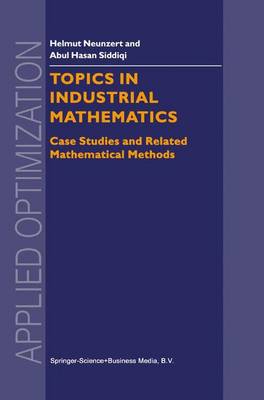Industrial Mathematics is a relatively recent discipline. It is concerned primarily with transforming technical, organizational and economic problems posed by indus try into mathematical problems; "solving" these problems byapproximative methods of analytical and/or numerical nature; and finally reinterpreting the results in terms of the original problems. In short, industrial mathematics is modelling and scientific computing of industrial problems. Industrial mathematicians are bridge-builders: they build bridges from the field of mathematics to the practical world; to do that they need to know about both sides, the problems from the companies and ideas and methods from mathematics. As mathematicians, they have to be generalists. If you enter the world of indus try, you never know which kind of problems you will encounter, and which kind of mathematical concepts and methods you will need to solve them. Hence, to be a good "industrial mathematician" you need to know a good deal of mathematics as well as ideas already common in engineering and modern mathematics with tremen dous potential for application. Mathematical concepts like wavelets, pseudorandom numbers, inverse problems, multigrid etc., introduced during the last 20 years have recently started entering the world of real applications. Industrial mathematics consists of modelling, discretization, analysis and visu alization. To make a good model, to transform the industrial problem into a math ematical one such that you can trust the prediction of the model is no easy task.
- ISBN13 9781441948335
- Publish Date 19 November 2010 (first published 31 October 2000)
- Publish Status Active
- Publish Country US
- Imprint Springer-Verlag New York Inc.
- Edition Softcover reprint of hardcover 1st ed. 2000
- Format Paperback
- Pages 377
- Language English
